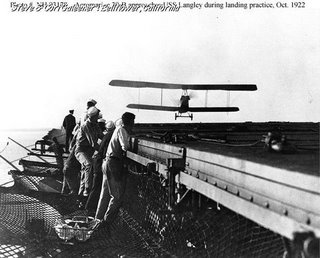Home networking, fractal generation, 256 colors! See what you missed by not reading Part XI? Oh, yeah…it was still set in 1988.
The addition of lots of colors and sound allowed me to get to know some interesting things, that are taken for granted today. I found a company advertizing in some Mac Magazine named “Brilliant Colors.” They would produce color business cards from your Mac generated PICT file. Just do your graphics, put the floppy in the mail and a few weeks later, back came a set of business cards that were professionally done. Not that I made any money at it, but I sure loved the opportunity to learn graphics via this capability. Basically, they had you send a picture that was 4x the size of the card, which got an effective 288 dots per inch resolution.
I used a program “Pixel Paint” to colorize the black and white diagrams I scanned in (via a DEST scanner) from Uniform Regulations. It was great to get a bilateral picture, like the SWO insignia, because I could color 1/2 of it and then copy, flip and paste and I was done. It took about 3 hours to color in a warfare insignia, which I learned the artistic appeal of shaded gradients in the background. I did cards for a submariner, a USAF officer, my brother-in-law, then a Major in the 2/263rd Tank Battalion of the SC Army National Guard, and my own cards. I later did many for Surface Warfare Officers, and aviators (of both “flavors”). At one point, I got out to San Francisco and was able to meet the owner of Brilliant Colors and he and I discussed making a military art catalog, which would then be placed at the Personal Services in the base exchanges. He liked the idea, so I went to work and generated about 200 stock backgrounds. Their “civilian” catalog had the backgrounds, and used an overlay generated with HyperCard (discussed in an earlier post) to put the customer specific data on the picture. The idea never took off, as he sold the business to his brother, a doctor, who wanted a full blown business plan done if he was to consider the military side of the business. Since I had already done the artwork, I wasn’t sure what the probelm was, but…that was where that went. I still did cards for a few more years, before they closed their doors.
In addition to graphics, I learned about sound capture and editing. One weekend, when I was stuck at home, I got “Top Gun,” “Star Trek 4,” “Buckaroo Banzai,” “Platoon,” and the “Terminator” and hooked up my cassette deck to the audio output on the VCR. I’d watch the movies until I found a worthy sound bite, then I’d rewind the movie and turn the cassette on and record it. I got about 45 minutes of raw recording out of that weekend. One of the guys in the Mac club loaned me an interface box and I sat for several more days, reducing the sounds to useful form, along the way learning how to clip the right part of the waves out and also celan the sound up. When I was done, I had 28 800K floppies full of sound files. There were some fine sound bites in that set.
The Mac had the ability to link sounds to various operating system events. I recall one of the earliest ones was a puking sound that most people would attach to the “floppy eject” event. It was fun for a bit, but, got old quickly. I did help out one of my friends one weekend, by checking on his apartment. I took the time to take my sound files and attach something appropriate or funny to each of the system events on his computer, which he found Sunday night, when he got home. Again, he was mildly amused, but the processing power was still not fast enough, and he had to wait for each sound file to play before he could keep going. It played well, but significantly degraded “work flow.”
Again…this was 1988, and on a Mac….PCs had no chance of doing anything like this, without spending at least as much as you would on a Mac to kludge together a capability that was essentially built into a Mac and the OS.
Besides “Smash Hit Raquetball,” “Falcon,” an F-16 flight simulator came out for the Mac. The graphics of the PC were still so incapable, it wasn’t worth them producing the game for a PC market.
For a while, the cool games were out for the Mac, but the tide began to shift. The games, complete with poor graphics, began to be the new and more voluminous issues. The game writing companies saw the numbers were with the PC, even if the quality was much less for their work. It was a Sony Beta vs VHS format issue. Superior, but, the market liked cheap better than good.
My mind wandered, occasionally, to thoughts of creation of a database that would pull together the many things done aboard a ship, and how I could make it manageable. An officer at the Naval Post-Graduate School in Monterey, CA, had begun a model of this, using HyperCard as an interface. The opening screen had the areas that would be covered, like administration, logistics, logs and records, etc, but he had plowed down the logistics path. You clicked on the button for logistics and screen with a picture of the ship appeared. The you clicked on the area of the ship, like the Main Engineering space, then a layout of the Engine room came up. Click on the GTM module, then the attached gearbox of the turbine, then the fuel control. when you reached the lowest component, then the COSAL sheet (Consolidated Shipboard Allowance List) came up and you would then be able to fill out a DD1348 requistion form for the fuel control and send it to Supply, all using graphic controls. More on this later.
On the tail of all of that, I was headed back to a sea command, where, because of the mandate by COMNAVSURFLANT that if the Navigator billet was not filled by a LCDR, then the XO would be the Navigator. That was me. Enroute the ship, I spent a few weeks in Norfolk Fleet Training Center learing the detail work for my trade. I drug the Mac II with me, and my knowledge of spherical trigonometry from my adventures chronicled over here, which I used to do my track planning homework, using Excel.
Next time: “When should we get underway?” and the Admin Warfare Shipboard OperatiOnal Tickler program on the “dark side.”




